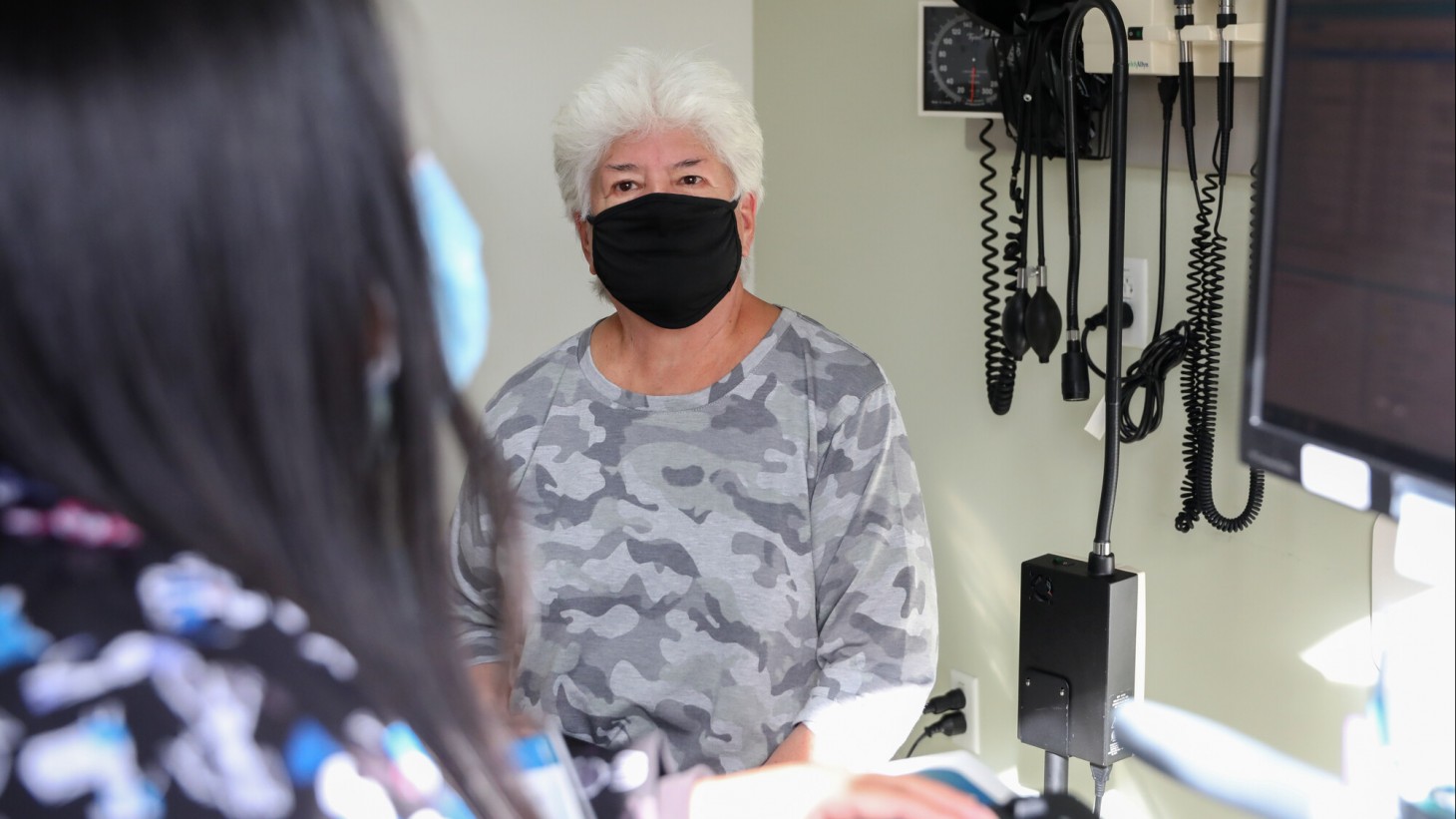Hank q1q2-2021
See the whole issueDecreasing Diabetes Disparaties

Customizing care: Medical assistant Guadalupe Pantoja, a member of OPEIU Local 30, takes readings from patient Mary Hart at Kaiser Permanente Rancho San Diego, as part of her Southern California team’s efforts to tailor care for Latino patients with diabetes.
Personalizing care improves outcomes for Latino patients
When it comes to addressing health care disparities, medical office assistant Anna Jenkins thinks her unit-based team is up to the challenge.
“I can go to my UBT members and say, ‘This is a care gap. Give me your feedback. Give me your ideas,’” says Jenkins, an OPEIU Local 30 member and labor co-lead for the Rancho San Diego Primary Care team. “Our administration listens to us. They’re very open to letting us try it our own way.”
The Level 5 team is leveraging Labor Management Partnership principles and tools to communicate, coordinate and customize care for Latino patients with diabetes. The approach has led to better health outcomes and improved service for a group disproportionately impacted by diabetes.
The unit-based team has increased the number of Latino patients ages 65 to 75 whose blood sugar levels are under control, according to recent clinical quality measures.
“That partnership between management and labor is important,” says Silvia Hernandez, RN, medical office administrator and the team’s management sponsor. “This teamwork helps us to improve patient care and quality with excellent member satisfaction.”
Adapting approaches
Key to the team’s success is partnering with Complete Care Management, a specialized strike force that monitors the health of patients who struggle to control chronic conditions, such as diabetes and high blood pressure.
To better support her Latino patients, care manager Lily Thamiz, RN, has adapted her approach. She books longer appointments for Spanish-speaking patients who need interpreters, refers others to bilingual diabetes education classes, and relies on phone calls to connect with those short on time.
“The only time we can talk is when they’re driving,” says Thamiz, a member of Specialty Care Nurses of Southern California, an affiliate of UNAC/UHCP. “These are solutions I’d never considered before.”
UBT members tailor treatment in other ways, too. To ensure continuity of care for Latino patients in their 60s and 70s, they standardized the steps needed to download and share data from glucose monitors. Providers use the devices to track patients’ blood sugar levels and adjust their medications. By consistently managing and sharing data, staff members guarantee they do not miss crucial patient information when communicating with one another.
“They make you feel like you really matter,” says Mary Hart, 71, a Latina patient who has diabetes. “They really show their concern for your health.”
